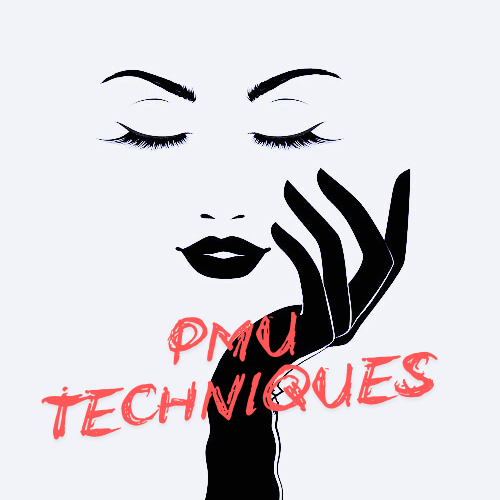Elevate Your PMU Skills: A Deep Dive into Brow Techniques

Eyebrow tattooing is not a simple, flat process; it requires creating eyebrows with a three-dimensional effect. Rather than tattooing them with a solid black saturation, the aim is to achieve a layered and designed appearance for the eyebrows. Eyebrow tattoo artists have created a variety of eyebrow shapes over the years, employing different techniques to achieve this. For beginners, mastering some of the most common and fundamental eyebrow tattooing techniques is essential. Now, let's explore these important methods.
|
1. Exploring Different PMU Techniques--Mastering Brow Lining · Pull over the line · Pendulum Airy Movement · Back-and-Forth 2. Exploring Different PMU Techniques--Mastering Brow Shading · Pendulum motion · Whip shade · Circular movement · Reciprocal motion · Zigzag · Cross-hatch |
There are two basic techniques in eyebrow tattooing: shading and lining. Lining is used to determine the contour of the eyebrows and serves as the foundation for eyebrow coloring. Shading involves applying color within the outlined eyebrow shape.

|
Exploring Different PMU Techniques-Mastering Brow Lining
When it comes to lining, whether you’re applying eyeliner, shaping eyebrows, or defining lip contours, the technique you choose can make all the difference. Here are some tips to consider:
· Pull over the line:
For crisp and precise strokes, create a very light stroke by making a bigger swing downward without overlapping.
· Pendulum Airy Movement:
This technique is excellent for achieving soft, blended effects. To create a more saturated brush stroke, overlap the small area three times before moving down. This method will help you achieve a denser stroke.

|
· Back-and-Forth:
A versatile method for gradually building pigment. The third type is a supersaturated stroke, where eyebrow tattoo artists create a 3D effect in the middle of the eyebrow using a back-and-forth motion.
And for lining, the most common approach is the versatile back-and-forth technique. This refined and steady method produces smooth, clean results every time. It allows for seamless transitions and bold, consistent outlines, making it ideal for achieving the polished, professional look that every client deserves.
Exploring Different PMU Techniques-Mastering Brow Shading
There are all sorts of tricks to shading, filling in, and coloring to help create the perfect eyebrow.
Pendulum motion:

|
The first motion we'll focus on is pendulum motion, where your needle remains at a 90-degree angle and swings from side to side. This motion should always be smooth, with the pixels spreading out from the center. It is an ideal technique for beginners since you can practice with a pencil on paper to achieve smooth transitions.
When transitioning between strokes, start your next stroke about halfway through the first one. This approach should create a seamless blend. By following this method, you can achieve perfectly blended eyebrows every time.
To achieve the desired technique, you should move the needle in two different directions, making contact with the skin each time. This approach allows for the quick application of pigment. However, if you don’t practice this movement smoothly and seamlessly—lifting the needle from the skin after each swing—you may end up with clumpy knots as a result.
The pendulum motion is particularly effective for eyebrows, creating a lovely powdery effect, and it can also be adapted for use on the lips. When you wipe down the area, you should see that these pixels blend seamlessly into one another.
Now, lets discuss what not to do with the pendulum motion. If the needle stays on the skin, moving only up and back, this is not the correct technique. As you move along the eyebrow, if it shifts in chunks, those chunks will become visible when wiped down. Instead, the correct method involves a wiggling motion on the skin, resembling a doodle.
If you notice clumps in your eyebrows, it may indicate that you are not swinging your needle like a pendulum. Think of this movement as resembling that of a clock.
Whip shade:

|
Now, let's move on to the Whip shadow technique. This is a common method used in permanent makeup (PMU). It resembles a pendulum motion; however, it only makes contact with the skin in one direction. Even though the needle appears to move back and forth, it only touches the skin during the forward swing.
In this technique, when I swing the needle toward myself, the pixels will gradually spread apart as the needle approaches me. This motion effectively blends the pink hues of the eyebrows seamlessly.
Now, I will pull the needle away from myself, which causes the pixels to spread out as the needle moves away. You’ll notice that these pixels look different. I’ve observed that pulling away actually deposits more pigment onto the skin. This will be evident when we wipe it down. If you find that your shadow application consistently results in one eyebrow having more pigment, it might be time to adjust your technique.
As we wipe away the pigment, you can see that when I pull away from myself, there is indeed more pigmentation. A common mistake, especially among beginners, is digging too deeply into the skin. It is essential to pat the surface gently. Whipping the needle aggressively can lead to trauma, resulting in poor outcomes and even scarring.
If you are struggling to maintain shape, achieve good retention, and ensure clear healing from your strokes, consider revising your technique.
Circular movement:

|
The next movement we will discuss is the circular movement, which is very useful for color shading. This technique is not suitable for everyone, especially those who cannot tolerate whiplash shadows or the pendulum movement in their eyebrows. When working with clients who have more mature or fragile skin, particularly if their skin appears overworked, it’s essential to apply the pigment quickly and efficiently.
Using tight circular motions can achieve this. It’s better to use a larger needle to ensure you achieve true color density rapidly. It is also recommended to use this technique when applying eyeliner and lipstick. If you experience difficulty getting color into these areas, the circular motion can be very effective for eyeliner.
This technique is not suitable if your goal is to scatter pixels for eyebrow work. If you want to apply color quickly, this method is highly effective.
Ensure that your circles intersect on all sides. As you progress, move along with your circles and make certain that your next row of circles is in contact with the one before it. This method will assist you in attaining an even application of color. Maintain tight and deliberate movements.
If you have difficulty adding color to your eyebrows or eyeliner, I suggest using the circular technique. Numerous individuals have inquired about how to effectively apply color in the eyeliner region, so I recommend watching this demonstration. When you encounter difficulties, opting for a larger needle can help keep the ink from spreading excessively, and using a circular motion will aid in your eyeliner application.
Reciprocal Motion:
In this step, perform an interacting motion, which is used along the baseline of the eyebrow to create a firmer, more defined line. Position your machine at a 90-degree angle and make light movements on the skin, repeating this three or four times. Then, move back and forth with about a 50% overlap to establish a solid line.
Zigzag:
The next technique is the zigzag. While the pendulum movement is horizontal, extending from the head to the tail of the eyebrow, the zigzag involves vertical movements between the baseline and the top line of the eyebrow. It's important to reduce your speed for this technique, as it requires slow, deliberate movements. Remember, the speed of your hand should match the speed of your machine. To visualize this, identify your baseline and top line, then perform wide zigzag motions back and forth.
Cross-hatch:
the next technique is your crosshatch can do any of these techniques. So we're going to take the whip, pull it at yourself, and then crossing the hatch means you're going to come and reposition your hand so that it forms an X in the work you just did, and pull it again. This will increase the saturation.
All these strokes can be perfected, but knowing when and how to use them will lead to better results.




코멘트